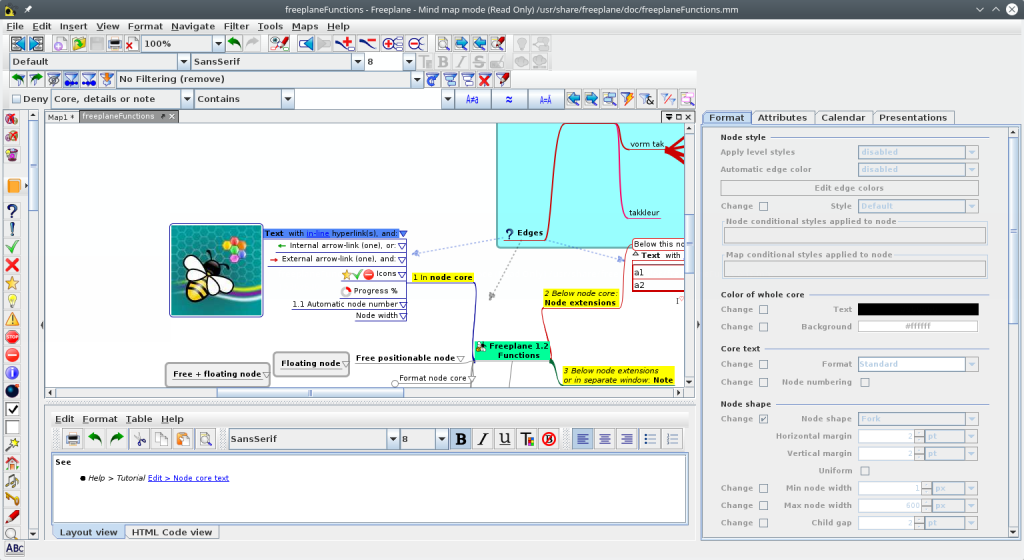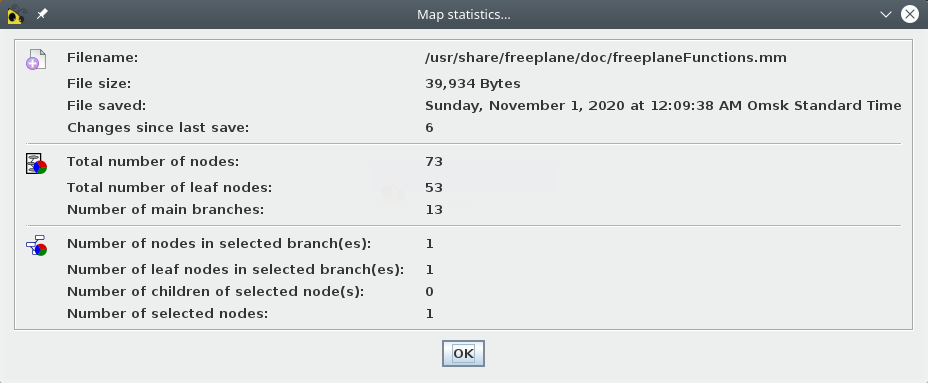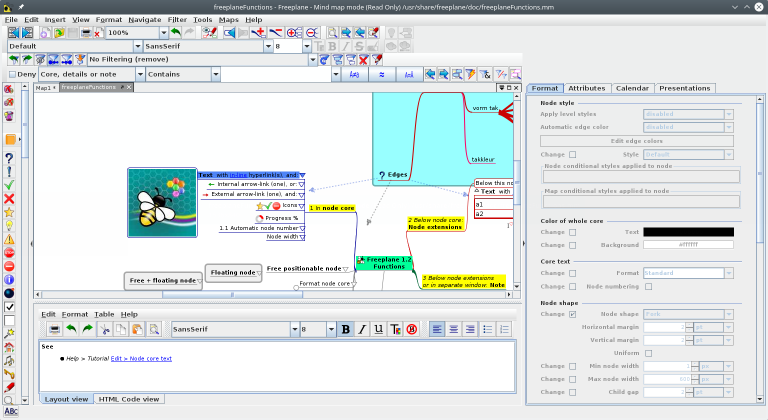
Instead it is a Freeplane extension using a versioning system. This is not a web-based mapper like MindMeister, Coggle or MindMup. He calls it Freeplane-collaborative-tools. Sébastien Georget recently announced a personal initiative to allow Freeplane users to work together on a map without all the emailing back and forth, and spotting changes to copy to your own map. Plain: The shape outline will be drawn according to the stroke-color and the stroke-width properties.I haven’t tried it, but yes, apparently so.

Actually the two events clicked and selected are known. Events are added to selectors using the : (colon) symbol. The GraphStream CSS allows to specify styles for elements that are applied only when a given condition is met. If an element pertains to several classes, the styles of each class will be merged, if there is a conflict the style appearing in the first class in the class list is chosen. Edges having the strange keyword in their ui.class attribute will have this style. For example to define a class of edges you can use edge.strange. You specify a selector for a class using a dot. setAttribute ( "ui.class", "foo, bar" ) To assign a class to an element you change its ui.class attribute. For example to define the style of a node with identifier A, you could use node#A.

To identify elements by their identifier you can use the # character followed by the identifier of the element. You can further specify to apply the style to individual elements.

Each rule defines the style of a group of elements of the graph. A style rule is made of a selector and a set of style properties. Style rulesĮach style sheet is a sequence of style rules. The syntax used by GraphStream is very similar to the one used by CSS. However if you remove the attribute, this will not remove the style for the node.

This creates a style for this specific node.


 0 kommentar(er)
0 kommentar(er)
